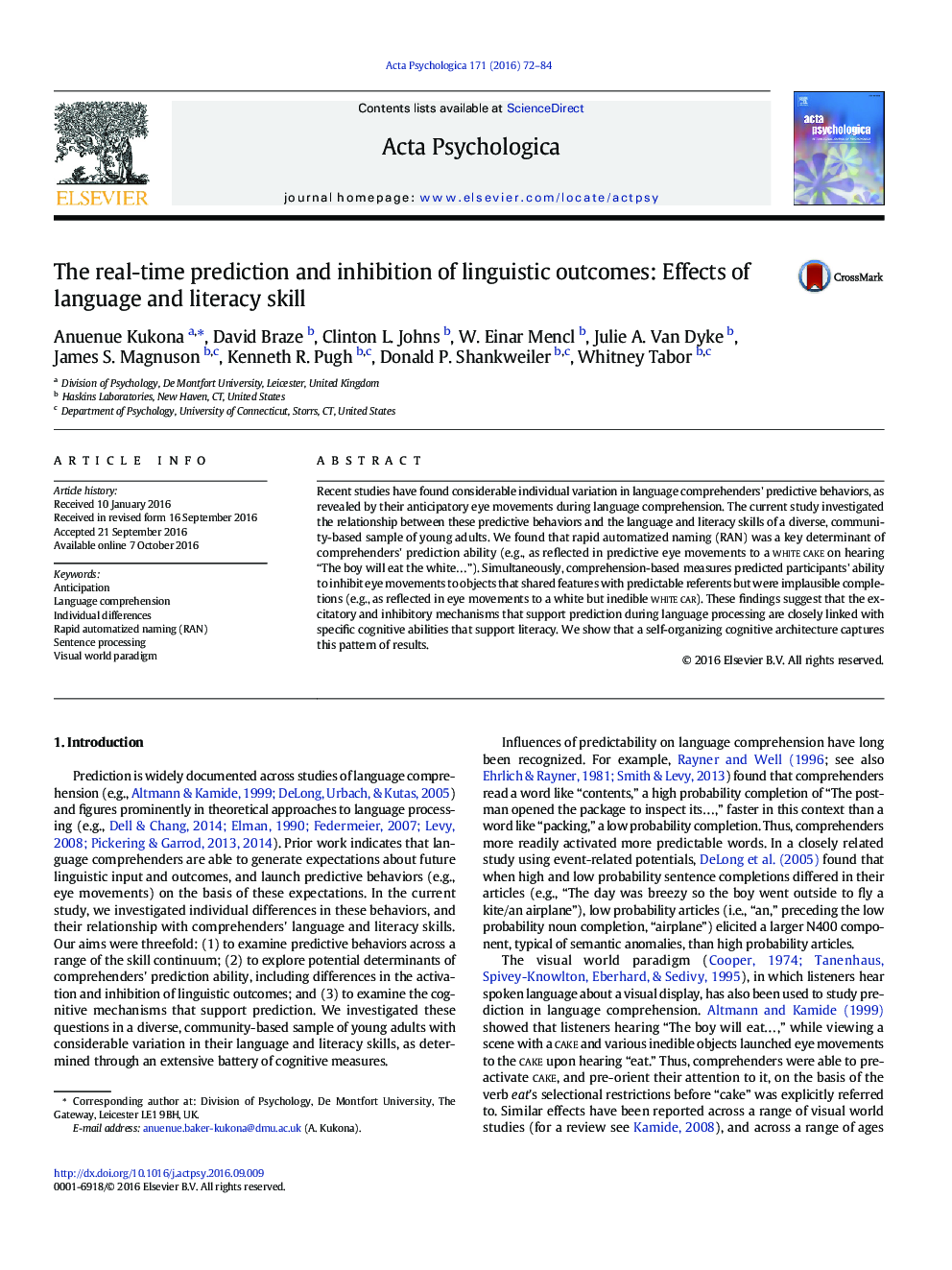| Article ID | Journal | Published Year | Pages | File Type |
|---|---|---|---|---|
| 5040282 | Acta Psychologica | 2016 | 13 Pages |
â¢We report on a visual world eye-tracking experiment that investigated individual differences in prediction.â¢Rapid automatized naming (RAN) and comprehension skill were key determinants of comprehenders' prediction-related behaviors.â¢We discuss these results in relation to self-organization.
Recent studies have found considerable individual variation in language comprehenders' predictive behaviors, as revealed by their anticipatory eye movements during language comprehension. The current study investigated the relationship between these predictive behaviors and the language and literacy skills of a diverse, community-based sample of young adults. We found that rapid automatized naming (RAN) was a key determinant of comprehenders' prediction ability (e.g., as reflected in predictive eye movements to a white cake on hearing “The boy will eat the white⦔). Simultaneously, comprehension-based measures predicted participants' ability to inhibit eye movements to objects that shared features with predictable referents but were implausible completions (e.g., as reflected in eye movements to a white but inedible white car). These findings suggest that the excitatory and inhibitory mechanisms that support prediction during language processing are closely linked with specific cognitive abilities that support literacy. We show that a self-organizing cognitive architecture captures this pattern of results.
